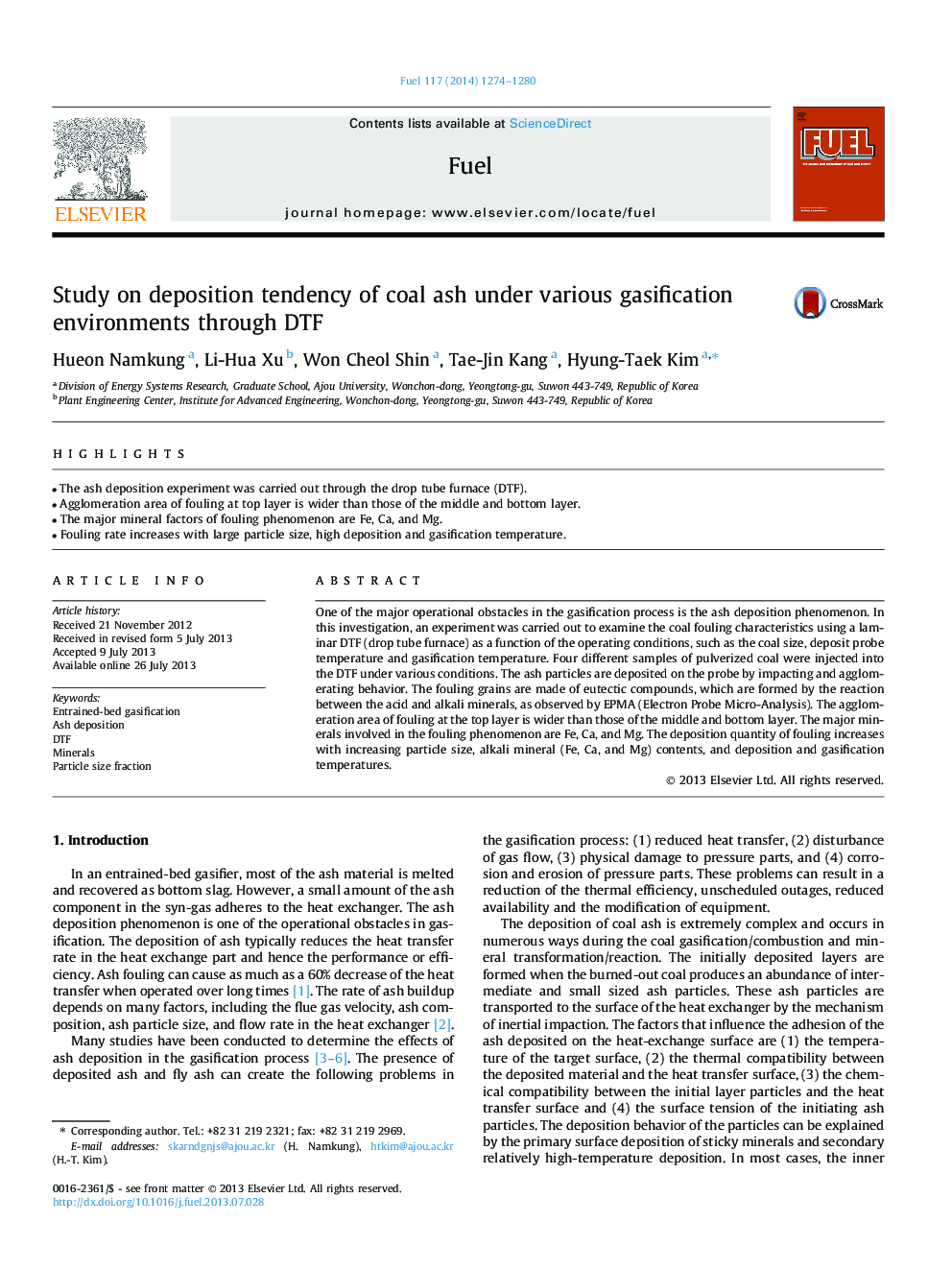| Article ID | Journal | Published Year | Pages | File Type |
|---|---|---|---|---|
| 10272273 | Fuel | 2014 | 7 Pages |
Abstract
One of the major operational obstacles in the gasification process is the ash deposition phenomenon. In this investigation, an experiment was carried out to examine the coal fouling characteristics using a laminar DTF (drop tube furnace) as a function of the operating conditions, such as the coal size, deposit probe temperature and gasification temperature. Four different samples of pulverized coal were injected into the DTF under various conditions. The ash particles are deposited on the probe by impacting and agglomerating behavior. The fouling grains are made of eutectic compounds, which are formed by the reaction between the acid and alkali minerals, as observed by EPMA (Electron Probe Micro-Analysis). The agglomeration area of fouling at the top layer is wider than those of the middle and bottom layer. The major minerals involved in the fouling phenomenon are Fe, Ca, and Mg. The deposition quantity of fouling increases with increasing particle size, alkali mineral (Fe, Ca, and Mg) contents, and deposition and gasification temperatures.
Related Topics
Physical Sciences and Engineering
Chemical Engineering
Chemical Engineering (General)
Authors
Hueon Namkung, Li-Hua Xu, Won Cheol Shin, Tae-Jin Kang, Hyung-Taek Kim,
